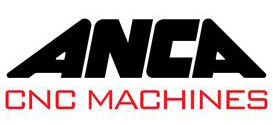Over the past decade, new technologies increasingly have permeated the factory floor. Automation, always a part of manufacturing, has escalated quickly thanks to steadily greater computer processing power and data storage. At the same time, technologies like artificial intelligence, the Internet of Things connectivity, cloud computing, big data analytics, 3D printing and many others — previously complex to install and configure — have become affordable and scalable. They have found their way into industrial applications.
This rapid acceleration of digital transformation has been termed Industry 4.0: the Fourth Industrial Revolution. A major outcome of this period has been that the truly connected factory, or smart factory, is a reality. As more machines begin to communicate with each other, productivity increases. Efficiency gains and analytical tools that can predict maintenance needs improve productivity even more. But the real benefits of a smart factory reach far beyond mere productivity. They provide the ability to predict and adjust to changes, both internal and external, to offer unprecedented agility and create real competitive advantages.
While it’s easy to see how automation increases productivity by speeding up processes, streamlining product movement between machines and reducing errors, the true benefits of a smart factory come from a far broader concept.
Smart factories offer complete transparency by integrating machines, processes and people into a single, digitally connected system. Sensors constantly feed data from every element of the manufacturing process, ensuring that information reflects current conditions. It’s then integrated with supplier and customer data to create a holistic view of upstream and downstream supply chain processes.
This means that any change can be instantly recognized and addressed, whether it’s a difference in the availability of raw materials, a bottleneck in production, a shift in market demand or some other variable. And of course any necessary changes can be performed either by human intervention or autonomous decision making.

The ability of a smart factory to predict outcomes based on historical and real-time data offers endless benefits, from anticipating inventory issues to predicting quality problems and monitoring safety concerns.
One significant opportunity provided by smart factories is predictive maintenance. Until now, organizations had to choose between maximizing the life of a part, which risks its failure and subsequent machine downtime, or incurring the cost of replacing parts early, perhaps unnecessarily.
Predictive maintenance means that data gathered from connected, smart machines enables accurate prediction of when and where failures could occur, maximizing the life of parts and minimizing unnecessary downtime.
The pandemic has accelerated the use of cloud applications around the world, and the ability to access information from anywhere to make informed decisions is a substantial component of a smart factory. With data-gathering at the heart of smart factory procedures, utilizing the cloud is fundamental to operations. Using a cloud service provider, or CSP, removes the need to invest in on-site server infrastructure, maintenance and IT staff.
Benefits include unlimited scalability, making it easy to grow without additional infrastructure. Cost usually is tied to consumption, so you’re paying for only what you use. And the CSP is responsible for updating and maintaining operating systems.
While some people are concerned about security, the fact is that a reputable CSP will have much greater resources to put into cybersecurity to protect your data in its cloud than you ever could hope to have in an on-site system.
A smart factory can optimize the use of every asset, resulting in less downtime, greater capacity and reduced changeover time. Detecting quality defects faster and identifying the causes mean lower scrap rates and lead times, as well as better-quality products. Running a smart factory is likely to lower costs, increase efficiency, expand optimization, establish more predictable inventories and improve predictive maintenance.
The environment and staff receive benefits too. Operational efficiencies may result in a smaller environmental footprint while a reduction in the potential for human error should reduce the likelihood of industrial accidents. Also, moving toward a smart factory operation can insulate you from a potential skills shortage.
While the technology for building a truly smart factory exists, it’s unnecessary to change everything at once. In fact, an important attribute of the connected factory is that it will continue to evolve as technology and requirements change. Build it incrementally, adding elements as you can, and adapt the system to suit your business, not the other way around.
The ANCA Integrated Manufacturing System is a modular manufacturing system that lets you add automation to a specific process or build an entirely connected production line. Custom-built to your needs, AIMS connects machines and processes to maximize productivity, improve quality and free operators from doing simple tasks so they can be redeployed to more valuable projects. Everything is controlled by an AIMS server, which manages data flows and machine programs, displays real-time machine activity and continuously gathers production data.
At whatever speed, investing in smart factory capabilities makes sense for your business. The benefits of agility, connectedness and transparency are essential to enable you to function more effectively and efficiently in an increasingly complex, rapidly shifting market.
Contact Details
Related Glossary Terms
- feed
feed
Rate of change of position of the tool as a whole, relative to the workpiece while cutting.
About the Author
Based in Australia, Lucas Hale is global marketing manager at ANCA CNC Machines. For more, call 248-926-4466 or visit https://machines.anca.com.








